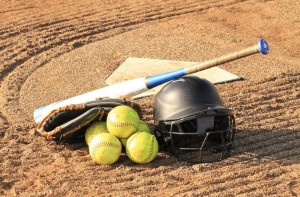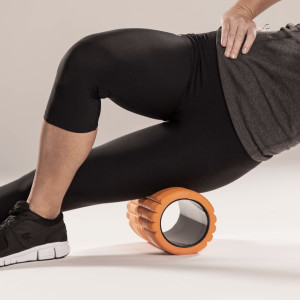Posted on
June 03, 2018 by
Joe Fleming
 Longtime athletes and coaches are constantly on the hunt for easy and effective ways to both help prevent common sports injuries as well as speed up recovery times when an injury does occur. Tactics like ice therapy, cupping, and foam rolling have all had their heyday recently, but one practice seems to have endured the longest – sports massage.
Longtime athletes and coaches are constantly on the hunt for easy and effective ways to both help prevent common sports injuries as well as speed up recovery times when an injury does occur. Tactics like ice therapy, cupping, and foam rolling have all had their heyday recently, but one practice seems to have endured the longest – sports massage.
Believed to have originated in ancient Greece and Rome where gladiators were prescribed massages both before and after working out or battling, sports massage has evolved throughout the centuries to incorporate more physiotherapy and recovery techniques. This has lent itself to a newer therapeutic approach called soft tissue mobilization.
What is Soft Tissue Mobilization (STM)?
An umbrella term to capture a wide array of techniques, soft tissue mobilization is any type of physiotherapy performed either manually or with instruments that help to release soft tissues in the body. Soft tissues are essentially any component of the musculoskeletal system that is not bone – so ligaments, tendons, muscles, skin, fat, fascia, cartilage, nerves, and so on.
Soft tissue injuries are common in sports, from sprains to muscle strains to tendonitis and other stress injuries. The healing process following a soft tissue injury involves a unique process of biological repair. An inflammation response from the body floods the tissue at first with fluids, blood, and eventually white blood cells; this causes the characteristic swelling, warmth, and redness of a fresh soft tissue injury like an ankle sprain. Read the rest of this entry →
Tags: sports tissue mobilization
Category
Health & Fitness, Sports Fitness
Posted on
May 26, 2018 by
Joe Fleming
 Ankle sprains are the most common injury among soccer players, accounting for 20 percent of all injuries.
Ankle sprains are the most common injury among soccer players, accounting for 20 percent of all injuries.
Ankle sprains affect soccer players of all levels, from beginners to professionals like Cristiano Ronaldo and Lionel Messi.
No matter what your skill level, when it comes to preventing sprains during games, there are lots of things you can do to keep your ankles strong and healthy so that you can spend as much time on the field as possible.
Read on to learn more about how soccer players of all ages and abilities can avoid ankle sprains.
Identify the Common Causes of Ankle Sprains
In order to prevent ankle sprains, it’s important to first know how they most often occur in soccer players.
Listed below are some of the most common reasons that soccer players end up with ankle sprains:
-
Contact injuries — one player slides into another and the impact causes the player’s ankle to roll
-
Tripping over equipment that wasn’t put away properly
-
Stepping into holes or tripping over bumps on uneven, poorly maintained fields
-
Wearing loose-fitting cleats that leave room for the ankle to twist inside
Preventing Ankle Sprains
Some of these causes of ankle sprains are unavoidable. But, soccer players (and coaches of younger players) can still be proactive about strengthening the muscles that surround the ankle joint. By doing this, players will be more resilient to contact injuries, falls, and other common causes of ankle sprains.
Listed below are four different ways that soccer players can strengthen their lower body and reduce their risk of dealing with sprains. Read the rest of this entry →
Tags: Christiano Ronaldosoccer injuries
Category
Health & Fitness, Sports Medicine
Posted on
May 16, 2018 by
Joe Fleming
 When it comes to staying fit and injury-free, many athletes look to preventing common sprains, strains, and ligament tears. What about the dangers of skin infections though? Surprisingly, these seemingly harmless culprits can turn into the most life-threatening of them all. Don’t forget about the former tight end for the New York Giant, Daniel Fells, who almost had his foot amputated due to a skin infection in 2016; or the Washington Redskins and Dallas Cowboys defensive tackle, Brandon Noble, who fought MRSA complications for two whole years.
When it comes to staying fit and injury-free, many athletes look to preventing common sprains, strains, and ligament tears. What about the dangers of skin infections though? Surprisingly, these seemingly harmless culprits can turn into the most life-threatening of them all. Don’t forget about the former tight end for the New York Giant, Daniel Fells, who almost had his foot amputated due to a skin infection in 2016; or the Washington Redskins and Dallas Cowboys defensive tackle, Brandon Noble, who fought MRSA complications for two whole years.
When it comes to recognizing the signs of skin infections and taking quick action, a little knowledge goes a long way. Don’t miss this quick guide:
Common Skin Infections Among Athletes
While various skin ailments can plague athletes, the following are often most widely spread. They include:
MRSA – this antibiotic-resistant strain of staph bacteria, specifically methicillin-resistant Staphylococcus aureus (MRSA) is fatal when left untreated and continues to affect not just professional athletes on a yearly basis, but college and even high school-age players too.
Staph bacteria naturally resides on people’s bodies; in fact, an estimated 1 in 3 people carry around staph bacteria in their nose (and between 5 and 10% actually carry around MRSA). Though typically harmless, sometimes when staph bacteria makes its way into open skin (which is common for athletes, especially in contact sports, to have) it can infect tissue, blood, the respiratory system, and more. Read the rest of this entry →
Category
Health & Fitness, Sports Medicine
Posted on
May 15, 2018 by
Dixie Somers
 No one wants to pull out their sports equipment just before a game only to notice mold, mildew, cracks, termite holes, or other forms of damage. That is why you should spend some extra time cleaning and correctly packing all of your gear. Here are a few tips that will help you keep your sports equipment safe and damage-free.
No one wants to pull out their sports equipment just before a game only to notice mold, mildew, cracks, termite holes, or other forms of damage. That is why you should spend some extra time cleaning and correctly packing all of your gear. Here are a few tips that will help you keep your sports equipment safe and damage-free.
Deflate All Balls When Not Being Used
Just before packing away all of your gear, you need to deflate any balls that are filled with air. Those balls contain a flexible air bladder that becomes weaker over time. Taking a few pounds of air out of a ball will increase its lifespan and prevent it from becoming lopsided.
Wipe Everything Down
Sports equipment is often caked in sweat and mud by the end of the season. Most gear is designed to stand up to that grime, but it needs to be thoroughly cleaned before packing it away. A damp towel and some warm water can be used to clean most sticks, bats, and pads. Once you are done cleaning the gear, you should wipe off all excess moisture. Read the rest of this entry →
Tags: Baseball equipment
Category
Health & Fitness, Outdoor Activities, Sports equipment
Posted on
May 08, 2018 by
Joe Fleming
 Knee injuries are extremely common among all athletes, both those who play recreationally and those who are seasoned professionals.
Knee injuries are extremely common among all athletes, both those who play recreationally and those who are seasoned professionals.
Patriots quarterback Tom Brady has experienced both a torn ACL and a torn MCL, as has his teammate Rob Gronkowski. Olympian Alex Morgan also suffered from a torn ACL when she was senior in high school.
None of these athletes let their knee injuries stop them, and neither should you. No matter what kind of knee injury you’re dealing with, these exercises can help you get back on your feet.
1. Foam Rolling for the Shins
Foam rolling is a great technique for loosening up the muscles and promoting recovery after tough workouts.
When most people think about foam rolling, they focus on the glutes, quadriceps, and hamstrings. But, it’s also important to spend some time rolling the shins, especially if your sport of choice requires you to do a lot of running — track, soccer, basketball, etc.
Foam rolling the shins helps relieve tension that could irritate the knees. It also helps prevent shin splints — win-win!
To foam roll the shins properly, start on all fours and place the foam roller at the base of the ankles. Then, slowly roll upward, pausing when you reach a tender spot. Hold your weight on each spot for 30-45 seconds before moving on. Read the rest of this entry →
Tags: knee injury exercises
Category
Health & Fitness, Sports Fitness
Posted on
April 30, 2018 by
Joe Fleming
 Among all kinds of athletes, both professional and recreational, tendinopathy (also known as tendinitis) is one of the most common injuries.
Among all kinds of athletes, both professional and recreational, tendinopathy (also known as tendinitis) is one of the most common injuries.
About one-third of runners suffer from Achilles tendinopathy, as will approximately 14 percent of volleyball players. Soccer players are also susceptible to tendinopathy, and athletes who frequently participate in overhead maneuvers (serving, pitching, etc.) are four times more likely to deal with tendinopathy compared to other athletes. Kobe Bryant famously tore his Achilles tendon in 2013 in a game against the Golden State Warriors, sidelining his season for nearly 8 months.
If you play one of these sports, or are an active person in general, it’s important to understand what can be done to prevent and treat tendinopathy. Read on to learn more about this condition and the steps you can take to keep it at bay while you continue to play your favorite sports.
What is Tendinopathy?
Tendons are tissues that connect the muscles to the bones. They bear the weight of muscles and allow the joints of the body to move freely.
Tendinopathy occurs when the tendon becomes inflamed. Repetitive motions — swinging a tennis racquet or golf club, for example — often cause tendinopathy in athletes.
The most common sites of tendinopathy include the shoulders, biceps, and elbows (tendinopathy of the elbow is often referred to as tennis elbow). Read the rest of this entry →
Tags: Sports MedicineTendinopathy
Category
Health & Fitness, Sports Fitness
 Longtime athletes and coaches are constantly on the hunt for easy and effective ways to both help prevent common sports injuries as well as speed up recovery times when an injury does occur. Tactics like ice therapy, cupping, and foam rolling have all had their heyday recently, but one practice seems to have endured the longest – sports massage.
Longtime athletes and coaches are constantly on the hunt for easy and effective ways to both help prevent common sports injuries as well as speed up recovery times when an injury does occur. Tactics like ice therapy, cupping, and foam rolling have all had their heyday recently, but one practice seems to have endured the longest – sports massage.



